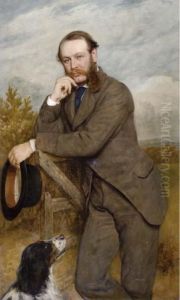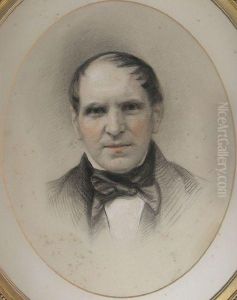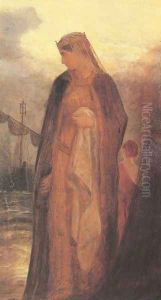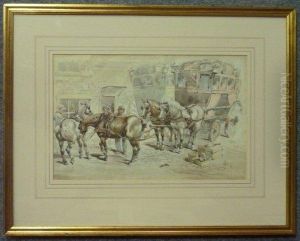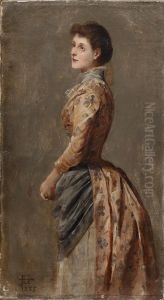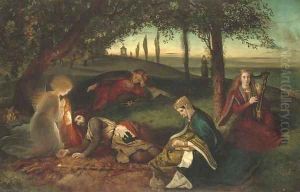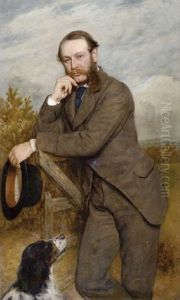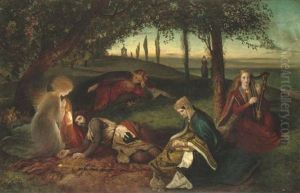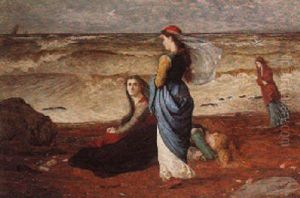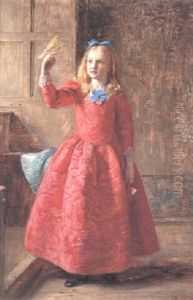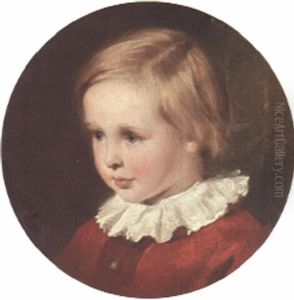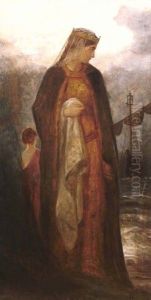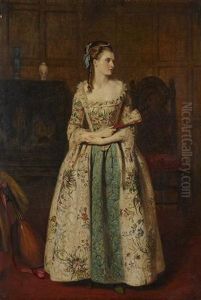James Archer Paintings
James Archer was a Scottish painter, born on June 10, 1823, in Edinburgh. He studied at the Trustees’ Academy in Edinburgh, where he was trained by artists such as Sir William Allan and Thomas Duncan. Archer's early works were primarily historical subjects and genre scenes. However, he is most renowned for his portraits, which combine Victorian narrative with a Pre-Raphaelite style influence.
In 1849, Archer exhibited his work at the Royal Scottish Academy and continued to show his paintings there and at the Royal Academy in London throughout his career. His painting 'The Young Pretender' showcased his historical narrative style, which caught the attention of both critics and the public. Archer was also deeply influenced by the Pre-Raphaelite Brotherhood, an art movement founded in 1848 by William Holman Hunt, John Everett Millais, and Dante Gabriel Rossetti. This influence is evident in his meticulous attention to detail and the use of bright colors.
During the 1860s, Archer spent time in Rome, which deepened his interest in historical and classical subjects. Upon his return, he began to produce works with religious and mythological themes, often characterized by their symbolism and rich, vibrant hues. One of his notable works from this period is 'The Death of King Arthur', which reflects his fascination with Arthurian legends.
James Archer became an associate of the Royal Scottish Academy in 1850 and a full member in 1870. His contribution to Scottish art was significant, as he blended international influences with local themes. Despite his success, he has not maintained the same level of fame and recognition as some of his contemporaries.
Archer's later years were marked by a decline in his artistic output, but he continued to paint until his death. James Archer passed away on September 3, 1904, in Haslemere, England. Throughout his life, Archer's work was characterized by its narrative strength, attention to detail, and vibrant color palette, which have earned him a respected place in the Victorian art history of Scotland.






